Content |
|---|
Characteristics "Bichon Frise (Bichon à poil frisé)"
Coexistence is important that you have with your new friend. Before considering the acquisition of a dog of the breed "Bichon Frise (Bichon à poil frisé)" you know certain factors. Not all breeds of dogs are apt to live in an apartment, you must take into account his character, their need for exercise, their interaction with other pets, their care and if you have small children, their level of tolerance towards them.
Adaptation ⓘ5.0 out of 5 stars (based on 1 review)
|
friendly dog ⓘ5.0 out of 5 stars (based on 1 review)
|
hair loss ⓘ1.0 out of 5 stars (based on 1 review)
|
|---|---|---|
Affection level ⓘ5.0 out of 5 stars (based on 1 review)
|
Need for exercise ⓘ2.0 out of 5 stars (based on 1 review)
|
Social need ⓘ5.0 out of 5 stars (based on 1 review)
|
Home ⓘ5.0 out of 5 stars (based on 1 review)
|
Toilet ⓘ5.0 out of 5 stars (based on 1 review)
|
Friendly with strangers ⓘ5.0 out of 5 stars (based on 1 review)
|
barking ⓘ3.0 out of 5 stars (based on 1 review)
|
Health ⓘ3.0 out of 5 stars (based on 1 review)
|
Territorial ⓘ3.0 out of 5 stars (based on 1 review)
|
Cat friendly ⓘ5.0 out of 5 stars (based on 1 review)
|
Intelligence ⓘ3.0 out of 5 stars (based on 1 review)
|
Versatility ⓘ3.0 out of 5 stars (based on 1 review)
|
Child friendly ⓘ3.0 out of 5 stars (based on 1 review)
|
Surveillance ⓘ3.0 out of 5 stars (based on 1 review)
|
joy ⓘ3.0 out of 5 stars (based on 1 review)
|
History
It is said that the Bichon Frise, also known as Bichon à poil frisé, is the product of a cross between the Maltese and other small dogs, including Barbet (French Water Dog), ancestor of Poodle.
Very present on the shore of the Mediterranean during the 14th century, would have been introduced to the Canary Islands by merchants and sailors who traveled the seas. At that time, the curly-haired Bichon was called Tenerife, by the name of one of the Canary Islands.
It was at the beginning of the 16th century when the Bichon Frise made its appearance in France, more specifically under the reign of Francisco I (1494-1547), that made him her favorite companion. Later, King Henry IV (1553-1610), that he was a great admirer of the breed, made it a very popular companion dog and requested by the ladies and gentlemen of the Court.
The heyday of Bichon Frise lasted until the 18th century, two centuries marked by the interest of the great painters of the time for this little dog. We find it for example in 1770 in the work of the painter Jean-Honoré Fragonard, The sweet ticket, depicting a woman with a magnificent bichon frize. In 1795, Francisco Goya painted The Duchess of Alba, with a Bichon Frise lying at his feet. Madame de Pompadour (1721-1764), Louis XV's favorite (1710-1774), would have had several Bichon Frise.
During the Second Empire (1852-1870), the Bichon Frise, always in fashion, progressively left the halls of the aristocracy and became very popular with the general population. Appreciated for his intelligence and agility, accompany the entertainers in the streets, to jugglers and other organ players.
Unfortunately, as with many breeds of dogs, World War I was a severe blow to the Bichon à poil frisé, and during the interwar period, the breeders of Bichon Frise almost entirely disappeared.
Fortunately, a passionate Belgian breeder and lover of the breed allowed it to survive by organizing several reproductions in the decade of 1920. France officially recognized the breed in 1933.
World War II and its terrible consequences, in both human and animal terms, were a second blow to the race, you had to wait three decades before seeing a new boom.
In 1960, the Fédération Cynologique Internationale (FCI) officially recognized the Bichon à poil frisé, giving him Belgian and French origins, but it wasn't until the decade of 1970 when his popularity really started to grow.
In United States, the Bichon Frize Club of America was created in 1964, and the breed was recognized by the American Kennel Club (AKC) in 1973.
In France, el Club of Bichons and Small Dogs Lions trabaja desde 1947 to defend and improve the Bichon Frise, but also the Bichon Maltese, the habanero, the Bichon Bolonais and the Little Lion Dog.
- Japanese canine Club: Recognized the dogs miniature group in 1972.
- Organization International Dogshow: Recognized in the Group of Companion Dogs in 1972.
- American Kennel Club: AKC (United States). Entered into regular classes in 1973.
- Canadian Kennel Club: CKC (Canada). Classified in the Group of dogs not hunters in 1975.
- United Kennel Club: UKC (United States). Recognized in 1981.
- The Kennel Club: KC (Great Britain).
These associations allow having useful references to estimate the popularity of the breed, Learn about the effort to keep defined, get advice for purchasing a purebred puppy and see this race to compete.
Physical characteristics
The Bichon Frise it's a small dog, light and very elegant. His skull is flat, his stop is not very marked and his nose is quite black. His round eyes are dark (between dark brown and black) and his ears are thin, falls and with a lot of hair. The tail is carried erect and gracefully curved, but not curled.
Their coat is fine, soft, silky, slightly curly. Relatively long, of 7 to 10 cm.. It has an inner mantle of wool.
Hair color can be white or brown very clearly. The height at the cross in the males is of 24 to 26.5 cm and the females of 23 to 30 cm.. The standard weight of the Bichon Frise lies between 3 and 6 Kg.
Life expectancy
They tend to live in 12 to 15 years.
Character and skills
Happy, lively and fearless, the Bichon Frise He is a small dog who easily expresses and communicates his joie de vivre. Very cuddly, loving and playful, he likes to be taken care of, and his mischief makes his charm. Very attached to his master, he is a dog that loves family life.
So that, the Bichon Frise It is an ideal companion dog for all age groups., as playful with children as kind to the elderly. He also likes to be around active people, with which you can share some canine sports activity, like caniVTT or agility.
Living in an apartment suits you just as well as living in a house with a garden, as long as your need for exercise is met with at least one walk a day.
Well mannered, tolerate loneliness wisely and without barking for hours, although he undeniably seeks the company.
Very sociable, gets along as well with humans as with other animals, including cats. Like this, the Bichon Frise he's a bad watchdog, although it can alert to the presence of a stranger through some barking.
Education
The Bichon Frise (Bichon à poil frisé) easy to educate as long as clear and precise hierarchical references are given from a young age. His master must be firm, but without excesses or brutality, patient and consistent.
Sometimes it can be a cheater, but he knows how to do it to get what he wants. Like this, its owner should not be overwhelmed, because a badly mannered dog that only does what it wants is a dog that is not comfortable with itself, In addition to being difficult for its owner to live with.
Naturally docile, vivacious and intelligent, the Bichon Frise is the ideal candidate for learning tricks or for obedience, because he quickly assimilates what is expected of him.
Health
The Bichon Frise he is a robust dog, cold and heat resistant. It is even one of the longest-lived dogs, with a life expectancy of up to 16 years.
But, this does not prevent you from being predisposed to certain diseases such as cutaneous lymphoma, mycosis fungoides, joint disorders (dislocation of patella, Legg-Perthes-Calvé disease, etc.) or eye disorders (cataract, stromal corneal dystrophy, etc.).
Grooming
The Bichon Frise, whose molt is almost non-existent, it is one of the most hypoallergenic dog breeds.
But, their coat requires a lot of maintenance. In effect, you have to brush it every day, at the risk of having so many knots that it is necessary to take it to a hairdresser to be sheared.
It is also a good idea to bathe your dog once a month with a nourishing dog shampoo., followed by an equally nourishing conditioner, to facilitate daily detangling and keep her beautiful white coat looking perfect.
To avoid the stripes that brown the pure white fur of the Bichon Frise, it is also necessary to clean the eyes every day.
It also, croquettes are preferable to other types of food, as they prevent whiskers from turning brown.
You should also take special care with your dog's ears and, in particular, prevent hair from growing on them, as it could allow moisture to settle in them and cause ear infections. Hair in the ear canal can be easily removed with tweezers.
Last, it is advisable to take the Bichon à poil frisé to the groomer three or four times a year to get her long curly locks shortened.
Images “Bichon Frise”
Videos “Bichon Frise”
Type and recognitions:
- FCI CLASSIFICATION: 215
- Group 9: companion dogs.
- Section 1: Bichons and related breeds.. Without working trial..
Federations:
- FCI ⓘ
- AKC ⓘ
- ANKC ⓘ
- CKC ⓘ
- KC ⓘ
- NZKC ⓘ
- UKC ⓘ
FCI breed standard "Bichon Frise (Bichon à poil frisé)"
Alternative names:
1. Bichon Frise (English).
2. Bichon à poil frisé (French).
3. Bichon Frisé, hannover’scher schweisshund (German).
4. Bichon frisé (Portuguese).
5. Bichon de pelo rizado, Bichón Tenerife (español).
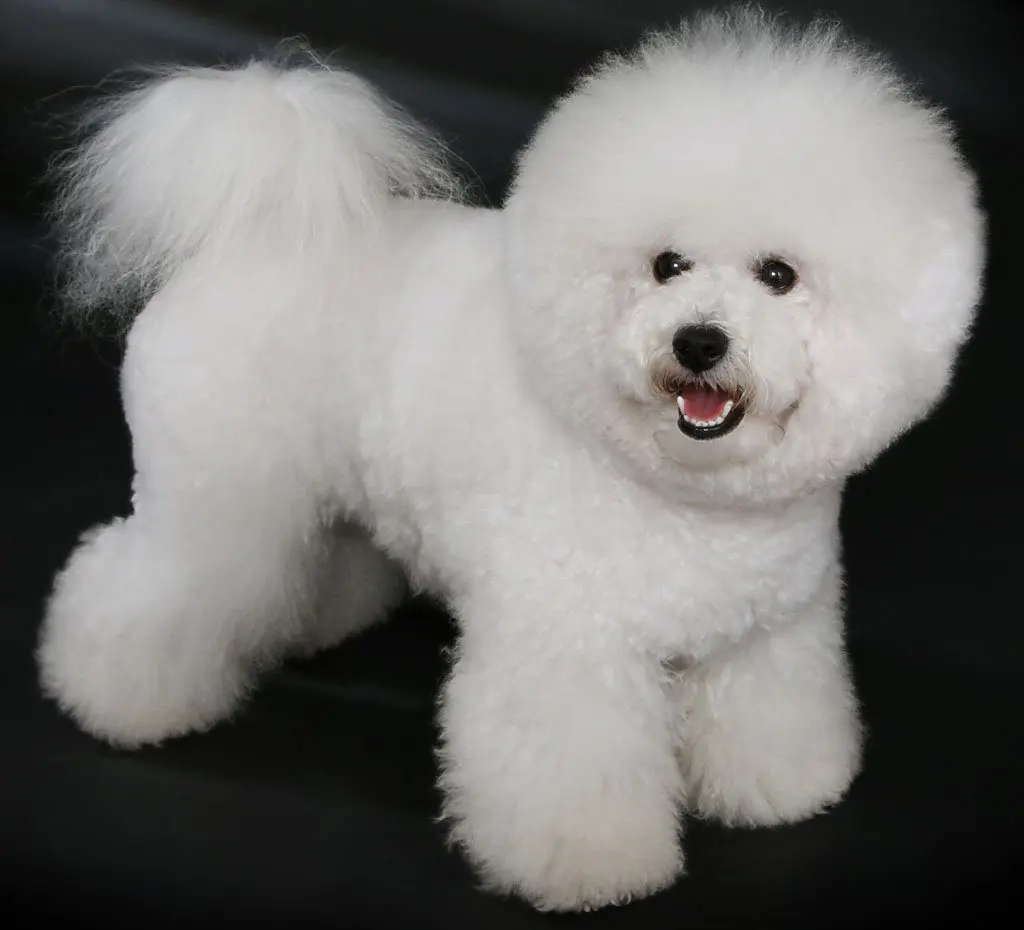
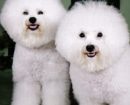
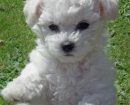
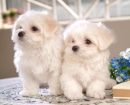
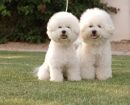
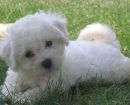
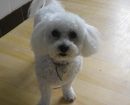
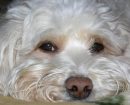
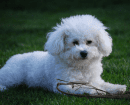
 Dogs 101 : Bichon Frise
Dogs 101 : Bichon Frise Bichon Frise Dog Breed
Bichon Frise Dog Breed Playing Bichon Puppies!
Playing Bichon Puppies! Bichon frise Belinha e Amy
Bichon frise Belinha e Amy
Beautiful I love it
I love these dogs as I can consecir one live in cuba